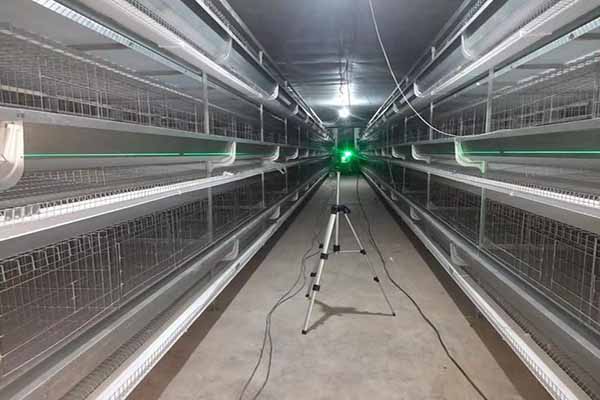The Impact of Temperature Control on Egg Production in Tanzanian Chicken Farms
Time : 2025-06-29
Introduction
Chicken farming is one of the most prominent industries in Tanzania, contributing significantly to the national economy. Among various factors affecting chicken production, temperature control plays a pivotal role. The egg production rate can be significantly impacted by maintaining an optimal temperature environment for chickens. This article aims to delve into the impact of temperature control on egg production in Tanzanian chicken farms, offering insights and practical recommendations to enhance productivity.
I. The Importance of Temperature Control in Chicken Farms
A. The Chicken’s Thermal Environment
The chicken’s thermal environment refers to the external factors that affect its ability to regulate body temperature. These factors include temperature, humidity, wind, and solar radiation. An optimal thermal environment is essential for ensuring the health and productivity of chickens.
B. Impact of Temperature on Egg Production
1. Lower Temperatures: When chickens are exposed to lower temperatures, their metabolism slows down, leading to decreased feed consumption and lower egg production.
2. Higher Temperatures: Excessive heat can cause heat stress in chickens, leading to decreased egg production, increased feed conversion, and a higher risk of mortality.
C. Ideal Temperature Range for Egg Production
The ideal temperature range for egg production in chicken farms is between 18°C and 24°C (64°F to 75°F). This range ensures optimal health and productivity in chickens, resulting in higher egg production rates.
II. The Role of Professional Poultry Equipment in Temperature Control
A. Heating Systems
1. Direct and Indirect Gas Heating: These heating systems provide a quick and effective way to raise the temperature in chicken houses. They can be controlled using thermostats to maintain the ideal temperature range.
2. Electric Heaters: Electric heaters are another option for maintaining the temperature in chicken houses. They can be used in conjunction with fans to circulate the heat throughout the house.
B. Cooling Systems
1. Air Conditioning: Air conditioning units can be used to lower the temperature in chicken houses, especially during the hot seasons. They can be controlled using thermostats to maintain the ideal temperature range.
2. Evaporative Coolers: Evaporative coolers use water to lower the temperature and humidity levels in chicken houses. They are energy-efficient and effective in maintaining the ideal thermal environment.
C. Ventilation Systems
1. Natural Ventilation: Natural ventilation uses openings in the chicken house walls and roof to allow air circulation. This method can be effective during cooler seasons but may not be sufficient during the hot seasons.
2. Mechanical Ventilation: Mechanical ventilation systems use fans and air ducts to control the airflow in chicken houses. They can be adjusted to maintain the ideal temperature range throughout the year.
III. Best Practices for Temperature Control in Tanzanian Chicken Farms
A. Monitoring the Temperature
Regularly monitoring the temperature in chicken houses is crucial for maintaining the ideal thermal environment. This can be achieved using digital thermometers or smart poultry monitoring systems.
B. Implementing Heat Stress Management Strategies
During hot seasons, it is essential to implement heat stress management strategies to prevent negative impacts on egg production. These strategies include:
1. Providing shade and ventilation
2. Offering cool water for drinking
3. Providing fans to circulate the air
C. Training and Educating Farm Workers
Training farm workers on the importance of temperature control and how to maintain the ideal thermal environment is essential. This will ensure consistent implementation of best practices and improve overall productivity.
IV. Conclusion
Temperature control is a crucial factor affecting egg production in Tanzanian chicken farms. By utilizing professional poultry equipment and implementing best practices, farmers can maintain the ideal thermal environment for their chickens, resulting in higher egg production rates and a more sustainable and profitable operation.












